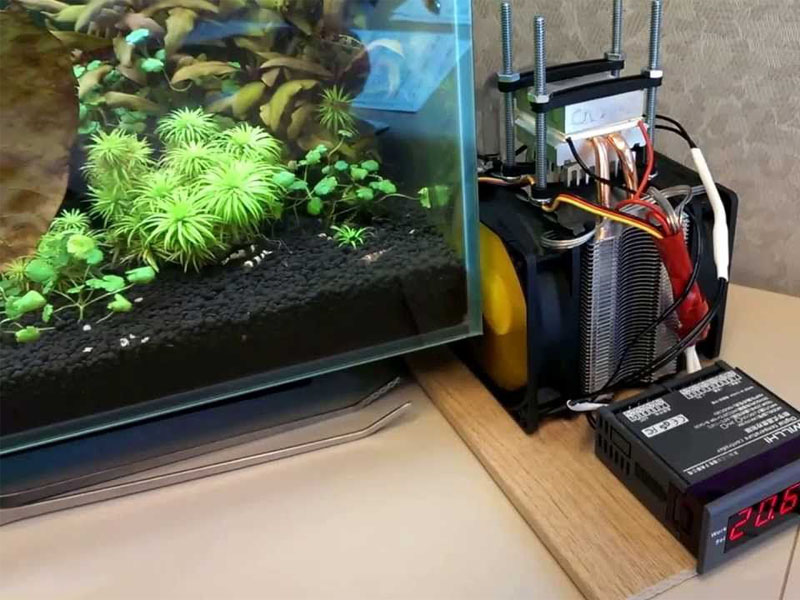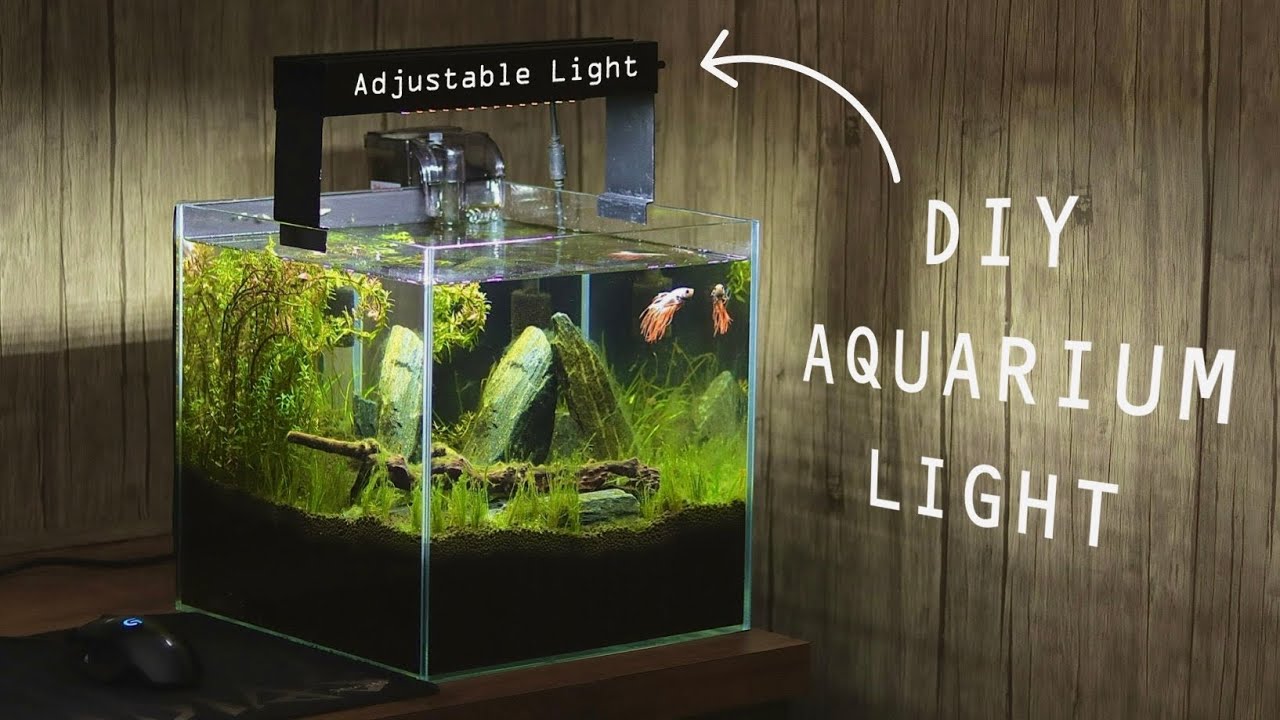Aquatic Knowledge
Aquarium Water Cooling: Effective Methods to Keep Your Tank Cool
Keeping your aquarium at the right temperature is crucial for the health of your aquatic creatures and plants. But when temperatures rise, you might find yourself facing a challenge—how to effectively cool the water in your aquarium. Aquarium water cooling is an essential process to ensure a stable and healthy environment for your fish and plants, especially during warm seasons or in hot climates.
In this guide, we’ll explore various methods and techniques for cooling aquarium water, from basic approaches to advanced systems. Whether you’re a beginner or a seasoned aquarist, understanding these cooling strategies can make a big difference in maintaining the ideal water temperature in your tank.
Why Aquarium Water Cooling Is Important
Before diving into the “how” of aquarium water cooling, it’s essential to understand why keeping the water temperature regulated is so crucial. Fish, plants, and other aquatic organisms are highly sensitive to temperature changes. When the water gets too warm, it can reduce the oxygen levels in the tank, increase the risk of diseases, and stress out your fish. In extreme cases, prolonged exposure to high temperatures can even result in the death of your aquatic life.
Maintaining a stable temperature isn’t just a luxury—it’s a necessity for the well-being of your aquarium.
Aquarium Water Cooling
When your aquarium starts heating up, especially during the summer, you might be scrambling to find ways to cool it down. There are several effective methods you can use to lower the water temperature.
Use a Fan to Increase Airflow

How Fans Help
Fans are a practical and effective tool for cooling aquarium water during a heat wave. When you position a fan to blow air across the surface of the water, it accelerates the process of evaporation. Here’s how it works: As the fan moves air over the water, it speeds up the evaporation process. When water evaporates, it absorbs heat from the remaining water, which lowers the overall temperature of the water. This is similar to how sweating cools our body—evaporation takes away heat, leaving us cooler. By increasing the rate of evaporation, a fan helps to dissipate the excess heat that accumulates in your aquarium.
Types of Fans
- Clip-on Fans: These are ideal for smaller to medium-sized tanks. Clip-on fans are designed to be attached to the side of your aquarium stand or the rim of the tank. They’re compact, easy to position, and effective at directing airflow over the surface of the water. Their versatility makes them a popular choice for hobbyists with limited space or those who need a simple solution for cooling.
- Oscillating Fans: For larger tanks or multiple tanks, oscillating fans are a better option. These fans rotate back and forth, covering a broader area and distributing airflow more evenly. By creating a more consistent breeze across a larger surface area, oscillating fans help in reducing the water temperature more effectively in big or multiple setups.
Placement Tips
To maximize the cooling effect of a fan, position it so that it directs air directly across the water’s surface. This setup ensures that the airflow is efficiently promoting evaporation. Here are some placement tips:
- Secure Positioning: Ensure the fan is securely positioned to prevent it from tipping over or falling into the aquarium. You can use stands or mounts designed for fan placement near aquariums.
- Avoid Direct Water Contact: Ensure that the fan is placed at a safe distance from the water to avoid any accidental splashes or moisture exposure, which could damage the fan or create electrical hazards.
Install an Aquarium Chiller

What Is an Aquarium Chiller?
An aquarium chiller is a specialized device designed to maintain a cool temperature in your aquarium by actively removing heat from the water. The chiller operates by pumping water through a cooling unit where it is cooled before being returned to the tank. This process effectively lowers the water temperature and helps maintain a stable environment for your fish and other aquatic life. Aquarium chillers are particularly useful in situations where other cooling methods are insufficient or impractical.
Choosing the Right Chiller
Selecting the appropriate chiller for your aquarium requires careful consideration of several factors:
- Tank Size: Ensure the chiller you choose is suitable for the size of your tank. Chillier capacities vary, and a unit that’s too small will struggle to cool your tank effectively, while one that’s too large may be unnecessarily expensive.
- Temperature Range: Check the chiller’s specifications to ensure it can achieve and maintain the desired temperature range for your aquarium. Some chillers are designed for more precise temperature control than others.
- Cooling Power: Choose a chiller with adequate cooling power for your tank’s needs. This is often measured in BTUs (British Thermal Units) or watts, and it indicates how much heat the chiller can remove from the water.
Installation Tips
Proper installation of an aquarium chiller is crucial for its efficient operation:
- Follow Manufacturer’s Instructions: Always refer to and follow the installation guide provided by the chiller manufacturer. This will ensure you set up the unit correctly and avoid potential issues.
- Connect to Filtration System: Typically, aquarium chillers are integrated with the tank’s filtration system. This setup allows the chiller to process and cool the water before it returns to the tank, ensuring consistent temperature regulation.
- Location Considerations: Install the chiller in a well-ventilated area to allow for optimal heat dissipation. Ensure the unit is placed where it will not obstruct tank maintenance or create accessibility issues.
Adjust the Aquarium Lighting

Impact of Lighting on Water Temperature
Aquarium lighting can significantly impact the water temperature, especially during a heat wave. High-intensity lights, such as metal halide lamps, generate a lot of heat that can raise the water temperature in your tank. The heat produced by these lights can contribute to an overall increase in tank temperature, which can stress your fish and other aquatic creatures.
Solutions for Reducing Heat from Lights
- Switch to LED Lighting: LED lights are a more energy-efficient alternative to traditional bulbs. They produce less heat, which helps in maintaining a cooler water temperature. LEDs are available in various intensities and colors, making them a versatile option for both aesthetic and functional needs.
- Use a Timer: Implementing a timer to control the duration of your lighting cycle can reduce the total amount of heat added to the tank. By limiting the amount of time the lights are on, you can mitigate their impact on water temperature. This approach also helps in managing the light exposure for your aquatic life, ensuring they receive appropriate lighting for their health and well-being.
Positioning and Shielding
- Proper Distance: Ensure that lighting fixtures are not placed too close to the water surface. This distance helps in reducing the amount of heat transferred to the water. Position lights at an appropriate height to balance light intensity and heat transfer.
- Use Light Shields or Reflectors: Light shields or reflectors can help in minimizing heat transfer by directing light away from the water or shielding it from direct exposure. This not only helps in managing heat but also improves light distribution within the tank.
By implementing these strategies, you can effectively manage and reduce the impact of high temperatures on your aquarium, ensuring a healthier environment for your aquatic pets.
Add Ice Packs or Ice Bottles
How Ice Packs Help
Adding ice packs or ice bottles to your aquarium is an effective and quick way to cool the water. As the ice melts, it gradually lowers the water temperature, helping to create a more comfortable environment for your fish during hot weather.
Best Practices for Using Ice
- Wrap Ice in a Cloth: To prevent direct contact with the tank’s water, which can be too abrupt and harmful, wrap ice packs or bottles in a cloth or place them in a plastic bag. This ensures the cooling process is gentle and controlled.
- Monitor Temperature: Regularly check the water temperature using an aquarium thermometer to avoid sudden drops, which can stress your fish. Aim for gradual temperature changes to maintain a stable environment.
Alternative Methods
For a more controlled cooling effect, consider using a dedicated aquarium cooling system that incorporates ice packs as part of its design. These systems are designed to maintain a consistent temperature without the need for constant monitoring.
Perform Partial Water Changes

Benefits of Water Changes
Performing partial water changes can effectively lower the overall temperature of your aquarium water. By replacing some of the warmer tank water with cooler tap water, you can help reduce the tank’s temperature and provide immediate relief to your fish.
How to Do It Safely
- Use Cool Water: Ensure that the water you add is cooler than the tank water but not excessively cold to avoid shocking your fish. A moderate temperature difference is best.
- Gradual Changes: Change a small portion of the water at a time, such as 10-20%, to avoid drastic changes in water parameters. This gradual approach helps minimize stress for your aquatic pets.
Frequency and Quantity
During heat waves, perform partial water changes regularly to maintain a stable and cool environment for your fish. Depending on the severity of the heat, you might need to do this every few days or even daily. Adjust the quantity and frequency based on your aquarium’s needs and monitor the temperature to ensure it remains within a safe range for your fish.
Conclusion
Keeping your aquarium water cool during a heat wave is crucial for the health and well-being of your aquatic pets. By using a combination of fans, aquarium chillers, adjusting lighting, adding ice packs, and performing partial water changes, you can effectively manage the temperature in your tank and provide a comfortable environment for your fish. Remember to monitor the water temperature frequently and adjust your cooling methods as needed to ensure the best possible care for your aquatic friends.
FAQs
How often should I use fans to cool my aquarium water?
Fans can be used continuously during a heat wave. Monitor the water temperature and adjust fan usage as needed.
Can I use ice directly in the tank to cool the water?
It’s best to wrap ice in a cloth or use ice packs to avoid direct contact with the water, which can cause sudden temperature changes.
How long does it take for an aquarium chiller to cool the water?
The time varies depending on the chiller’s capacity and the tank size. Generally, it can take several hours to achieve the desired temperature.
Will reducing lighting affect my fish’s health?
Reducing lighting can be beneficial during a heat wave. Ensure your fish still receive appropriate light levels for their health and activity.
What’s the best way to monitor water temperature?
Use a reliable aquarium thermometer. Digital thermometers often provide more accurate readings compared to traditional glass ones.
